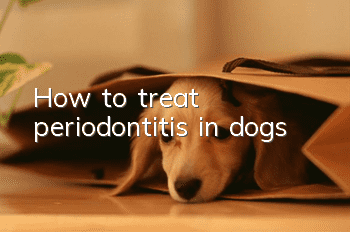How to treat periodontitis in dogs

Treatment methods for periodontitis in dogs
1. You need to temporarily prohibit your dog from eating hard things to prevent your dog’s teeth from breaking. You can buy some Softer dog food reduces stress on your dog’s teeth and helps reduce tartar buildup.
2. You need to brush and clean your dog’s teeth regularly.
3. Dogs with periodontitis usually need to go to a pet hospital to consult a professional doctor for treatment. Solving it on your own will usually treat the symptoms rather than the root cause. Therefore, if your dog often has symptoms such as red and swollen gums, bleeding, bad breath, etc., it is recommended to take your dog to the doctor in time.
4. Dental plaque and calculus need to be removed after anesthetizing the dog. In addition to the exposed dental calculus on the surface, it is usually also necessary to pay attention to the removal of dirt and calculus on the root surface of the teeth.
5. The dog’s teeth need to be polished to prevent the rapid recurrence of plaque and calculus. In addition, use oral spray for sterilization and antibacterial use in the oral cavity, cleaning away bacteria on the surface, and at the same time relieving bad breath and swollen gums.
Symptoms of periodontitis in dogs
Sick dogs salivate a lot, and the saliva is rancid, often mixed with blood; the mouth is sensitive, so be careful when eating and chewing Slow and often sudden vomiting of food, especially when eating hard food such as bones and fish bones. Over time, the pain may lessen. Oral examination shows that the diseased teeth are loose, and there is often a small amount of pus in the periodontal period. When the gums are squeezed, thick juice or blood can flow out. The mouth and exhaled air have a rancid smell.
- How to train a golden retriever to shake hands
- What food should a dog eat when giving birth to puppies?
- There is a hard pimple on the dog’s back
- How to train an excellent dog? Easily get rid of the dog’s bad habits!
- How to make your dog no longer afraid of bathing
- Dogs are picky eaters, which may be caused by the owner’s problems
- What to do if your French Bulldog catches a cold
- The story of the birth of a strong dog Pit bull strength training method
- Causes and treatments of Pomeranian constipation
- What's wrong with the golden retriever's eyes?



